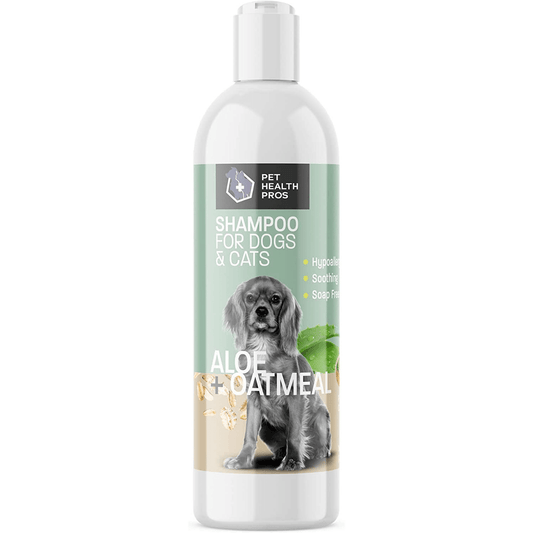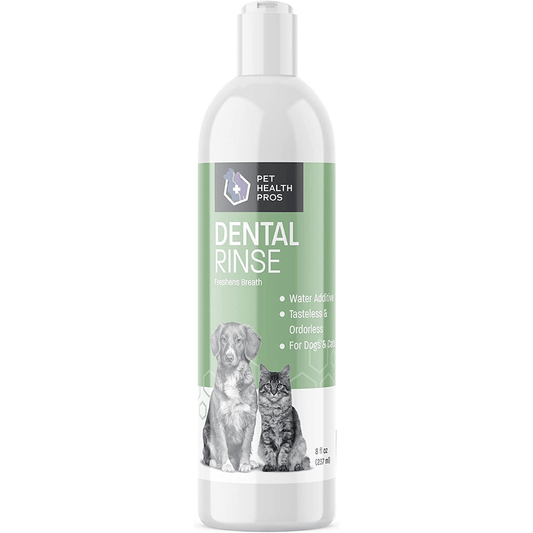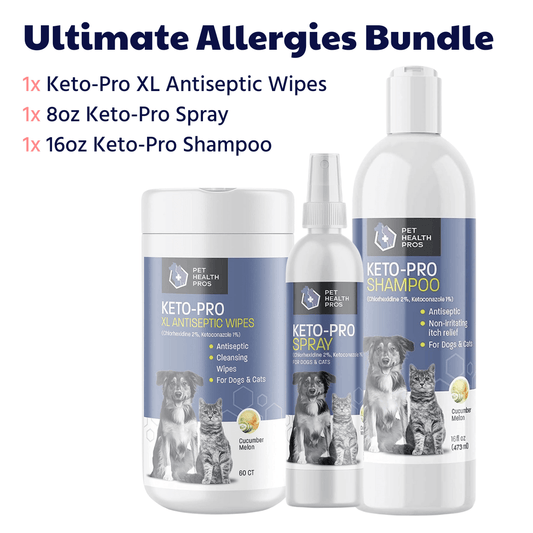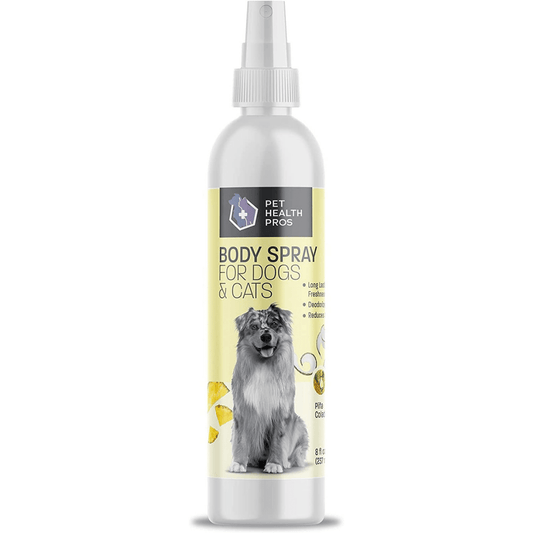Yeast infections in dogs' ears can be uncomfortable and bothersome for our furry friends. It is important to be aware of the symptoms, treatment options, and preventive measures to ensure the well-being of our pets. In this article, we will explore the key aspects of combating yeast infections in dogs' ears and how to effectively address this common issue.
Key Takeaways
- Regular ear cleaning is essential to prevent yeast infections in dogs' ears.
- Medicated ear drops, antifungal medications, and cleaning solutions are common treatment options for yeast infections in dogs' ears.
- Maintaining a balanced diet for your dog can help boost their immune system and prevent yeast infections.
- Avoiding moisture build-up in your dog's ears is crucial to prevent the growth of yeast.
- Collaborating with veterinarians and using top-grade ingredients in pet health supplies can contribute to preventing yeast infections in dogs' ears.
Symptoms of Yeast Infection in Dogs' Ears
Ear Discharge
One of the primary indicators of a yeast infection in a dog's ear is the presence of ear discharge. This discharge is often greasy and smelly, with a color that can range from brown to gray. It is a sign that should prompt a visit to the vet as it can indicate an underlying issue that requires medical attention.
The characteristics of the discharge may vary, and understanding these variations can be helpful in identifying the severity of the infection:
- Color: Brown, gray, or yellowish
- Consistency: Greasy or waxy
- Odor: Strong and unpleasant, often described as yeasty or similar to the smell of stale beer
Early detection and treatment are crucial in managing yeast infections in dogs' ears. If left untreated, the infection can worsen and potentially lead to more serious complications. Regular monitoring of your dog's ear health can help catch these symptoms early on.
It's important to note that not all ear discharge is indicative of a yeast infection. Other conditions, such as ear mites or bacterial infections, can also cause similar symptoms. Therefore, a proper diagnosis by a veterinarian is essential.
Odor
One of the most noticeable signs of a yeast infection in a dog's ear is a musty odor. This smell is often described as similar to moldy bread or cheese, and it can be quite strong. It's a clear indicator that something is amiss in your pet's ear environment.
The presence of a distinct odor is a telltale sign that warrants a closer examination and possibly intervention.
While the smell alone is not enough to diagnose a yeast infection, it is a significant symptom that should prompt a visit to the vet. Alongside other symptoms such as ear discharge and redness, a musty odor can help in diagnosing the condition accurately.
Redness and Swelling
One of the telltale signs of a yeast infection in a dog's ear is the appearance of redness and swelling. This inflammation is a reaction to the overgrowth of yeast and can cause significant discomfort for your pet. It's important to recognize these symptoms early to prevent further complications.
Inflammation in the ear can also lead to secondary infections if left untreated. A dog with a yeast infection may exhibit behaviors such as scratching the affected ear, head shaking, or rubbing the ear against furniture or the floor.
Early intervention is crucial in managing yeast infections in dogs' ears. Timely treatment can alleviate symptoms and prevent the infection from worsening.
Here are some steps to take if you notice redness and swelling in your dog's ears:
- Consult your veterinarian for a proper diagnosis.
- Follow the prescribed treatment plan, which may include medicated ear drops or antifungal medications.
- Implement a regular ear cleaning routine to maintain ear health.
- Monitor your dog's ears for any changes or signs of infection.
Treatment Options for Yeast Infection in Dogs' Ears
Medicated Ear Drops
Medicated ear drops are a cornerstone in the treatment of yeast infections in dogs' ears. These drops often contain antifungal agents that directly combat the yeast, as well as anti-inflammatory components to reduce discomfort and swelling. Proper administration is crucial for the effectiveness of the treatment.
Consistency in treatment is key, as interruptions can lead to a resurgence of the infection. It's important to follow the veterinarian's instructions on dosage and duration. Here's a simple guide on how to apply medicated ear drops:
- Gently clean the dog's ear with a recommended cleaning solution.
- Hold the ear flap upright and carefully fill the ear canal with the medicated drops.
- Massage the base of the ear to ensure the medication spreads throughout the ear canal.
- Allow your dog to shake its head to assist in distributing the medication deeper into the ear.
- Wipe away any excess drops from the ear flap.
Remember, never use medicated ear drops without a prescription, as the wrong medication can exacerbate the problem or cause additional complications.
It's also essential to monitor your dog for any signs of an adverse reaction to the medication, such as increased redness, swelling, or new discharge. If you notice any of these symptoms, contact your veterinarian immediately. Regular follow-up appointments may be necessary to assess the progress of the treatment and make any needed adjustments.
Antifungal Medications
When a yeast infection in a dog's ear is diagnosed, veterinarians often prescribe antifungal medications. These medications are designed to target and eliminate the yeast organisms causing the infection. One commonly prescribed antifungal is Itraconazole, which is effective against a variety of fungal infections.
Antifungal medications come in different forms, including oral tablets, injections, and topical treatments. The choice of medication will depend on the severity of the infection and the individual dog's health profile. It's crucial to follow the vet's prescription closely and complete the full course of medication, even if symptoms appear to improve, to prevent recurrence.
Remember, the goal of antifungal treatment is not only to alleviate symptoms but also to address the underlying infection. Consistent treatment is key to your dog's recovery.
Here is a list of considerations when using antifungal medications:
- Monitor your dog for any side effects
- Keep regular follow-up appointments with your vet
- Ensure the full course of medication is completed
- Avoid using over-the-counter medications without veterinary guidance
Some brands, such as Glenmark Pharmaceuticals and MicaVed, offer antifungal options for pets. Always consult with your veterinarian to choose the most appropriate medication for your dog's specific condition.
Cleaning Solutions
In addition to medicated treatments, cleaning solutions play a crucial role in managing yeast infections in dogs' ears. These solutions help to remove debris and discharge, creating an environment less conducive to yeast overgrowth. It's important to use a solution specifically designed for dogs, as their ear pH differs from humans.
Regular cleaning with the right solution can also soothe the dog's ears and prevent further infections. Here's a simple guide on how to use cleaning solutions effectively:
- Gently lift the dog's ear flap.
- Apply the cleaning solution into the ear canal.
- Massage the base of the ear to help the solution break up any buildup.
- Allow the dog to shake its head to assist in removing the debris.
- Wipe away any excess solution and dislodged material with a soft cloth or cotton ball.
Remember, never insert cotton swabs or any object deep into the ear canal as this can cause damage.
When selecting a cleaning solution, consider one that contains antifungal properties to further aid in combating yeast. Consult with your veterinarian for recommendations on the best products for your pet's specific needs.
Preventive Measures for Yeast Infection in Dogs' Ears
Regular Ear Cleaning
Regular ear cleaning is a cornerstone in the prevention of yeast infections in dogs' ears. Consistent and proper ear cleaning can significantly reduce the risk of infection by removing debris and wax that can trap moisture and foster the growth of yeast.
Frequency and technique are crucial when cleaning your dog's ears. Here's a simple guide:
- Weekly Cleaning: For most dogs, a weekly ear cleaning routine is sufficient. However, dogs that swim frequently or have floppy ears may require more frequent attention.
- Gentle Cleansers: Use a vet-recommended ear cleaning solution. Avoid harsh chemicals that can irritate the ear canal.
- Proper Technique: Squeeze the solution into the ear canal, gently massage the base of the ear, and wipe away excess cleaner and debris with a soft cloth or cotton ball.
Remember, over-cleaning can also lead to irritation and should be avoided. It's about finding the right balance for your pet.
If you're unsure about the proper technique or frequency for your dog, consult with a veterinarian. They can provide guidance tailored to your dog's specific needs and help you establish a routine that will keep your dog's ears healthy.
Balanced Diet
Ensuring your dog maintains a balanced diet is crucial for preventing yeast infections in their ears. A diet rich in nutrients supports a healthy immune system, which is vital in fighting off infections. Foods that are high in sugars and carbohydrates can promote yeast growth, so it's important to choose a diet that is low in these components.
Probiotics can be a beneficial addition to your dog's diet. They help maintain the balance of good bacteria in the gut, which can prevent the overgrowth of yeast. Here are some dietary components that can support your dog's ear health:
- High-quality proteins
- Limited ingredient diets to reduce the risk of allergies
- Essential fatty acids, such as omega-3 and omega-6
- Antioxidants to support immune health
A well-balanced diet not only keeps your dog healthy overall but also reduces the likelihood of yeast infections in the ears by maintaining a strong immune system.
Avoiding Moisture Build-Up
Maintaining a dry environment in your dog's ears is crucial for preventing yeast infections. Moisture is a breeding ground for yeast, and it can accumulate from various sources such as bathing, swimming, or even humid weather. To minimize moisture build-up, always dry your dog's ears thoroughly after exposure to water. This can be done using a soft towel or a cotton ball to gently wipe the outer ear canal.
Regular monitoring of your dog's ear environment is essential. Be vigilant for signs of excessive moisture or discharge, which could indicate the beginning of an infection. If your dog is prone to ear infections, consider using specially designed ear wipes that have drying properties or invest in a good quality ear cleaner recommended by your veterinarian.
Ensuring your dog's ears remain dry is not just about external care; it's also about managing internal factors. A healthy immune system can better resist infections, so overall health maintenance is key.
Here are some practical tips to avoid moisture build-up in your dog's ears:
- After baths or swimming, use a cotton ball to absorb any water that may have entered the ear canal.
- Avoid letting your dog shake its head excessively after ear cleaning, as this can bring deeper moisture to the surface.
- In humid climates, increase the frequency of ear checks and cleaning to prevent moisture from lingering.
By implementing these strategies, you can help keep your dog's ears healthy and free from the discomfort of yeast infections.
To safeguard your furry friend from the discomfort of yeast infections in their ears, proactive care is essential. Our Advanced Soothing Dog Ear Wipes are specially formulated to prevent such infections, ensuring your dog's ears remain clean and healthy. Don't wait for symptoms to appear; take action now by visiting our website and exploring our range of pet health supplies. Your pet's well-being is our priority, and with our products, you can provide them with the best care possible.
Conclusion
In conclusion, combating yeast infection in dogs' ears requires prompt recognition of symptoms, appropriate treatment, and consistent prevention measures. By understanding the signs of yeast infection, seeking veterinary guidance for treatment options, and implementing preventive strategies such as regular ear cleaning and monitoring, pet owners can effectively safeguard their dogs' ear health. Remember, early intervention and proactive care are key to ensuring the well-being and comfort of our furry companions. Stay informed, stay vigilant, and prioritize your dog's ear health for a happier and healthier life together.
Frequently Asked Questions
What are the common signs of yeast infection in a dog's ears?
Common signs include ear discharge, odor, redness, and swelling.
How is yeast infection in a dog's ears diagnosed?
Yeast infection in a dog's ears is usually diagnosed through a physical examination by a veterinarian and may involve taking a sample for microscopic analysis.
Can yeast infection in a dog's ears be treated at home?
While mild cases may be managed at home with proper ear cleaning solutions, it is recommended to consult a veterinarian for proper diagnosis and treatment.
Are there any preventive measures to avoid yeast infection in a dog's ears?
Regular ear cleaning, maintaining a balanced diet, and preventing moisture build-up can help prevent yeast infections in a dog's ears.
Can yeast infection in a dog's ears spread to other parts of the body?
In some cases, yeast infection in a dog's ears can spread to other areas of the body if left untreated. It is important to address the infection promptly.
Is it necessary to seek veterinary care for yeast infection in a dog's ears?
Yes, it is recommended to seek veterinary care for proper diagnosis and treatment of yeast infection in a dog's ears to ensure the health and well-being of the pet.









